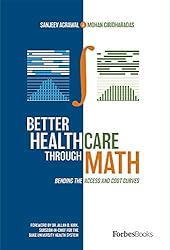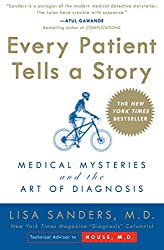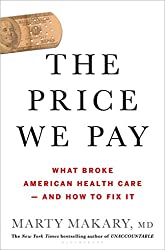
Rating: 8.2/10.
Better Healthcare Through Math: Bending The Access And Cost Curves by Sanjeev Agrawal and Mohan Giridharadas
Book about healthcare scheduling and operations written by a pair of consultants specializing in healthcare schedule optimization. Efficiency in healthcare is an important problem to tackle because the demand for healthcare will only increase in the next few decades, and we cannot afford to allocate more resources to it. The book describes the problems in healthcare scheduling, and the central premise is that humans make suboptimal local decisions due to lack of information visibility, while algorithms can achieve superior global optimizations.
There are two major challenges in healthcare scheduling. The first challenge is the mismatch between supply and demand — demand is unpredictable as people fall ill at unexpected times, and procedures might take longer or shorter than scheduled, patients may not show up for appointments, etc. On the supply side, providers typically work during business hours, so they’re unavailable for 2/3 of the time, and many personnel and pieces of equipment are highly specialized.
The second challenge is linked services: certain services must be provided together. For instance, a surgical procedure requires a team of doctors, an anesthesiologist, and an operating room; treating a patient in a hospital bed requires the right number of nurses, laboratory tests, pharmacy to dispense medication promptly, etc, so a patient visit requires numerous providers, medications, equipment, and other resources. Collectively this means healthcare scheduling is more complex than other types of scheduling, such as for airlines or Uber drivers.
The healthcare industry uses EHR software, but they often fall short — these systems are frequently too inflexible to accommodate the uncertainties of real life, and there is much confusion about what different metrics mean. Therefore, in practice, people often resort to making localized and ad-hoc decisions: they might schedule something if they see an open slot without considering the broader implications on other schedules. The optimization is a complex mathematical problem that basic spreadsheets cannot handle, so more sophisticated algorithms can have a lot of impact.
Different areas of healthcare have unique scheduling challenges. Operating rooms are scheduled in blocks, given the concurrent requirements for surgeries. However, EHR systems provide misleading metrics on utilization, eg, they might penalize surgeons for completing operations quickly and leaving some time unused; they may not distinguish between long chunks of time vs a bunch of minor gaps in the schedule that can’t be used for anything. As a result, surgeons lose trust in these systems and often devise their own scheduling methods to work around the system.
Hospital beds also present inefficiencies. Unlike hotels where guests typically check out in the morning and new ones check in during the afternoon, hospitals don’t follow this pattern. Patients might arrive at odd hours of the night and often don’t get discharged until the afternoon, after undergoing various procedures. The discharge process itself can face delays, such as waiting for a prescription, physically moving the patient out of the hospital, or cleaning the bed.
Emergency rooms are the most unpredictable in terms of scheduling, because nothing can be scheduled in advance, and tasks frequently get interrupted due to more critical cases coming in. Many ER visits require transferring the patient for inpatient care, but this often gets delayed due to bed unavailability. Such delays can lead to patients leaving without been seen, a highly undesirable outcome.
Infusion centers have a unique characteristic: it takes a lot of work to start and end the infusion, but during the actual infusion, which could last several hours, there isn’t much work to be done. Therefore, software designed for optimizing infusion centers need to account for the duration of the infusion to ensure there’s an available slot when the infusion ends. Additionally, it’s useful to visualize schedules to identify potential bottlenecks in the upcoming days and address them before they materialize.
Clinicians have highly optimized workflows, and as a general principle of healthcare scheduling, software shouldn’t try to change the workflows of experts, some of whom may have decades of experience. The main problem is that professionals lack visibility into other parts of the system. So any software that improves information visibility will be helpful for enabling experts to make informed decisions, or other ways of improving operational efficiency without disrupting anyone’s workflows (eg: by just changing the order of tasks in a schedule).
Any inefficiency results in extended wait times, and wait time is closely linked with patient dissatisfaction. If individuals have to wait more than an hour at the clinic or over two weeks for an appointment, they are likely to be dissatisfied. Healthcare leadership need to closely collaborate with IT departments or external software vendors to address these issues, and not delegate this work completely: the collaboration is crucial because domain knowledge and data is crucial to make the technology effective.
The epilogue discusses the COVID pandemic. The book was written in late 2020, and the news reported many overloaded hospital departments, the reality was that many areas were underutilized, like elective surgeries. The pandemic drives the need for software to efficiently manage and track the backlog of cases, a new challenge arising from COVID.
Overall, this book offers an excellent overview of the problems in healthcare scheduling, highlighting the diverse issues across different healthcare departments, and nuances not immediately apparent to laypeople. However, the book is non-specific about its solutions, especially the claim that advanced AI can fix these issues, but we see that many problems stem from demand being inherently unpredictable, so it’s unclear how advanced scheduling algorithms can help.



